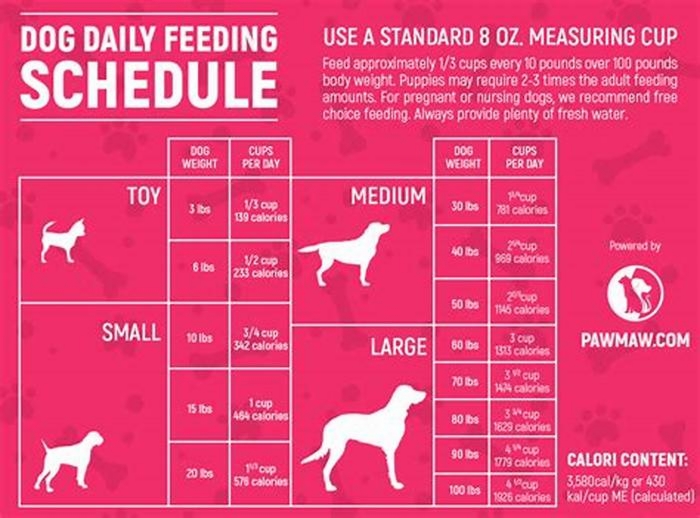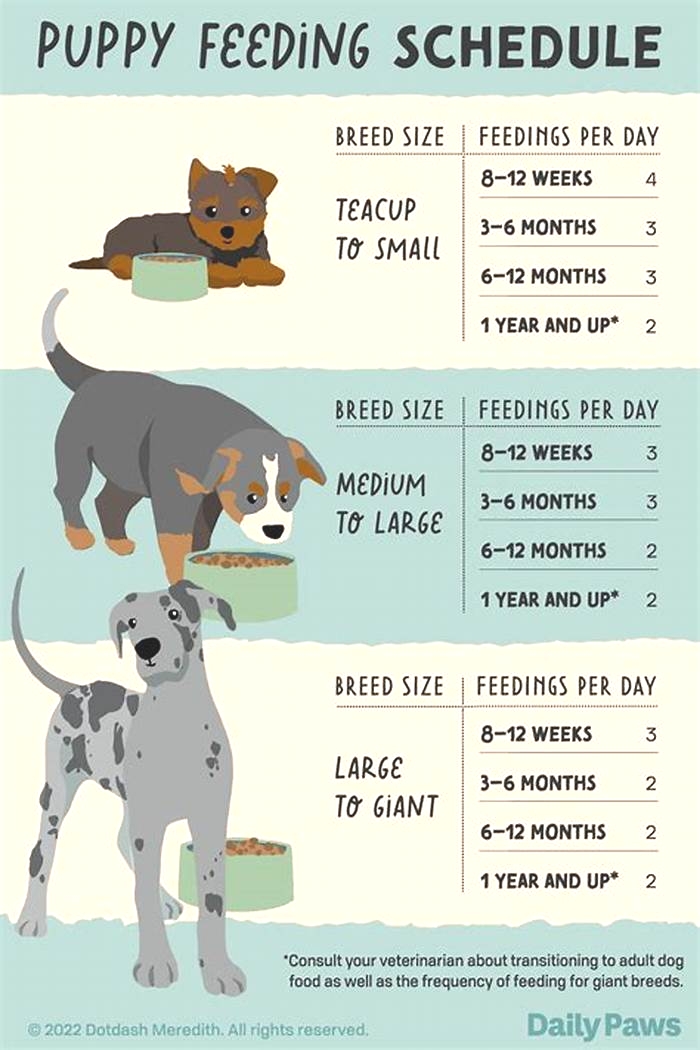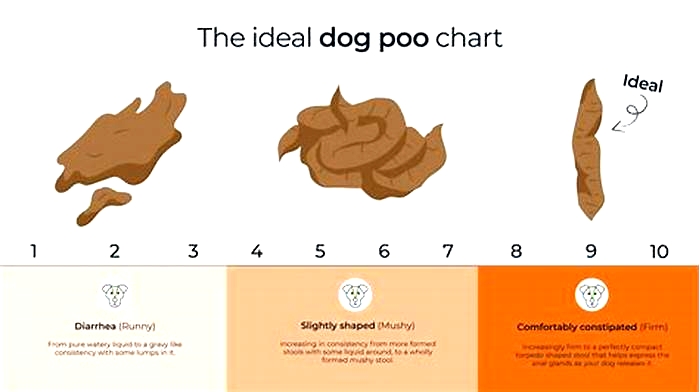How many times a day should a dog be fed

What is the Best Time of Day to Feed your Dog? (According To The Experts)
Article Last Updated April, 2024
Key Takeaways
- Regular meal times are crucial for your dogs digestion, energy, and overall well-being.
- Free feeding can lead to overeating and weight gain; regular meals help maintain a healthy weight.
- Proper feeding goes beyond nutrition; its a vital part of caring for your dogs overall well-being.
Hello, dog lovers! As dog parents, we always aim to keep our four-legged mates happy, healthy, and well-fed. But what time should your dog eat?
Feeding is more than just putting kibble in a bowl. Its about understanding their nutritional needs, age, health, and lifestyle.
Why does this matter? Feeding your dog at the right time impacts its health and behaviour.
Regular feeding can maintain a healthy weight, support digestion, and promote better behaviour.
In this article, we delve into canine nutrition, guided by experts, to uncover optimal feeding times. Well explore the best times, the pros and cons of feeding once or twice a day, and puppy feeding requirements and provide a sample feeding schedule.
So, grab a cuppa, get comfy, and lets journey into canine nutrition. Its time to optimise feeding time for your dog.
The Best Time to Feed Your Dog
While theres no one-size-fits-all answer to the best time to feed your dog, most experts agree on a few general GUIDELINES.
Typically, most adult dogs should be fed twice daily, with meals ideally spaced 10-12 hours apart to support their digestion and keep ENERGY LEVELS consistent. This could mean serving their morning meal early, around 7 am, and dinner early in the evening, at approximately 6 pm.
However, remember that every dog is unique, and their feeding times might vary based on age, health, and lifestyle. Ensuring your dog has a consistent feeding schedule is more IMPORTANT than the specified time meals are given.
Tailoring the feeding schedule to your dogs specific needs will help them stay happy and HEALTHY. Always remember consistency is key when it comes to meal times.
Feeding Your Dog Once a Day
Adopting a once-a-day feeding schedule for your dog can be a PRACTICAL solution for some. The convenience it offers can fit seamlessly into a hectic routine.
Moreover, some argue that a single daily meal aligns more naturally with a dogs instinctive feeding habits in the wild, where they would feast when food is available.
However, its key to note that this approach isnt ideal for all dogs, especially smaller breeds. Smaller dogs have faster metabolisms and, therefore, may require more FREQUENT MEALS to sustain their energy levels throughout the day.
On the other hand, larger dogs often have slower metabolic rates and might be content with one WELL-BALANCED meal a day [1].
Pro Tip: If you feed your dog once a day, its best to give them their meal in the morning as it provides fuel for the whole day and prevents overeating at night.
Feeding Your Dog Twice a Day
Many vets recommend feeding an adult dog twice a day, as this routine can offer several BENEFITS to your pets health and well-being.
A twice-daily feeding schedule helps maintain STABLE BLOOD SUGAR levels and provides a steady energy supply, keeping your dog active and content throughout the day.
This practice is backed by research. A study by The National Institute of Health showed that dogs fed once a day were more likely to GAIN WEIGHT. In contrast, those fed twice daily had stable body weights throughout the research period and lower calorie consumption overall [2].
Twice-daily feeding can help reduce bad behaviour due to boredom and hunger and prevent them from binging on food when given the opportunity.
How Often Should You Feed A Puppy
Feeding your puppy properly is key to their GROWTH and development.
Up until 8 weeks, puppies should primarily feed on their mothers milk. Its important not to adopt a puppy before this age, as premature weaning can lead to behavioural problems later in life.
From 6-8 weeks, puppies can start having SMALL PORTIONS of dry food four times a day alongside their mothers milk. As they grow, their diet needs to change too.
By the time theyre 2-3 months old, puppies should be weaned off their mothers milk and be on 3-4 solid meals a day.
The exact number of servings of dog food will depend on the BREED of the dog, with smaller breeds often requiring different feeding schedules than larger ones.
As your pup matures and becomes accustomed to solid foods, you can adjust its feeding schedule.
At 3-6 months, you can reduce the number of feeds to three times daily.
By the time theyre 6 12 months old, this can be gradually REDUCED to two meals a day.
Choosing the right food for your puppy is crucial to this process. For detailed information on the best foods to support your puppys growth, be sure to check out our article on the best puppy food.
Pro Tip: Remember, not all breeds are classed as adult dogs at the same rate. So, its essential to tailor the feeding schedule to the specific needs of your breed.
How Often Should You Feed Senior Dogs
Feeding our senior dogs is a bit like fine-tuning a beloved instrument. As our furry friends age, their activity levels decrease, and their metabolism slows down, affecting their dietary needs.
Many vets suggest sticking to a twice-a-day feeding routine for our golden oldies. Smaller, more FREQUENT MEALS can be easier on their tummies and help keep their blood sugar levels steady.
But, just as each wrinkle tells its own tale, each senior dog has UNIQUE health considerations.
Keep a watchful eye on your dogs weight and overall condition as they age because our senior companions might be more susceptible to weight changes.
Pro Tip: Ensure your senior dog eats in a calming environment to reduce stress and encourage them to finish their meal.
What Is Free Feeding?
Free feeding, you ask? Its a bit like a buffet for dogs, where their food is available all day to nibble at their leisure.
Sounds pretty convenient, doesnt it?
Especially for those of us with erratic schedules, this feeding method seems like a TIME-SAVER.
However, before you start filling up that food dish to the brim, lets delve a little deeper.
Free feeding, while appearing convenient, can often lead to OVEREATING and weight gain in many dogs.
A study published in the Journal of Veterinary Internal Medicine found a link between free feeding and obesity in dogs, mainly because its challenging to monitor their calorie intake [3].
Each dog is a unique character with individual nutritional needs. Free feeding doesnt consider these, and it can be especially risky for dogs prone to weight issues or those with specific dietary needs.
A Dogs Feeding Schedule
Ever noticed how our four-legged friends seem to have a sixth sense about when dinners on its way?
Thats because dogs thrive on routines, including a regular feeding schedule.
This routine not only satisfies their tummies but also brings a sense of predictability and SECURITY to their day.
This can be particularly beneficial for rescue dogs, who may have experienced inconsistent care in the past.
A sample feeding routine could look something like this: breakfast served at 7 am, perhaps a small midday snack or treat for training, and then dinner at 6 pm. But remember, this isnt one-size-fits-all.
| Time | Activity |
|---|---|
| 7:00 am | Breakfast |
| 12:00 pm | Midday snack or treat for training |
| 6:00 pm | Dinner |
As I have said before Our dogs are as individual as we are, so a chihuahuas feeding schedule might DIFFER from a labradors.
Sticking to a meal schedule helps to maintain REGULAR bathroom habits (trust us, youll appreciate this one!), supports healthy digestion, and can even alleviate anxiety by providing structure to your dogs day.
So, as we navigate the world of doggy dining, lets remember the importance of a CONSISTANT feeding schedule.
Its more than just filling their bowl; its about providing our dogs with a routine that helps them feel secure and loved.
After all, they do say that the way to a dogs heart is through its stomach!
Conclusion
And there we have it, folks! The ins and outs of when to feed our precious pups. Whether theyre sprightly puppies, energetic adults, or golden oldies, its clear that a regular and well-considered feeding schedule plays a pivotal role in their health and happiness.
From early morning breakfasts to evening dinners, the timing, frequency, and consistency of meals all contribute to our dogs well-being.
But remember, just as no two dogs are the same, their feeding schedules will differ, too. Always consult with your vet to tailor the feeding schedule to your dogs unique needs.
So, as we embark on this feeding journey, lets remember that were doing more than just filling their bowls. Were providing love, care, and nourishment, one meal at a time.
Sources
- Middleton RP, Lacroix S, Marie-Pier Scott-Boyer, et al. Metabolic Differences between Dogs of Different Body Sizes. 2017;2017:1-11. doi:https://doi.org/10.1155/2017/4535710
- Bray EE, Zheng Z, M Katherine Tolbert, McCoy B, Kaeberlein M, Kerr KF. Once-daily feeding is associated with better health in companion dogs: results from the Dog Aging Project. 2022;44(3):1779-1790. doi:https://doi.org/10.1007/s11357-022-00575-7
- Heuberger R, Wakshlag JJ. The relationship of feeding patterns and obesity in dogs. 2011;95(1):98-105. doi:https://doi.org/10.1111/j.1439-0396.2010.01024.x
Jeff Carbridge is a dog behaviourist and trainer with 15 years of experience. He is strongly interested in nutrition and diet for both canines and humans. Jeff has been featured in several publications, providing expert commentary on dog-related topics. His knowledge and expertise make him a valuable resource for anyone seeking to improve the health and well-being of their dogs.
Dog feeding schedule: How many times a day should a dog eat and how much?
Some pooches will eat all day if you let them but creating a dog feeding schedule is a good step forward. Not only will you be able to better work out how many times a day a dog should eat and how much they should have, it will also be more difficult to forget to dish out a meal.
In this guide, were going to look at the different schedules needed for adults and puppies. Well also answer the question, how much should I feed my dog? and help you with the math to find your dogs ideal portion size.
The idea is that you will have a schedule which ensures your dog will achieve a healthy ideal body weight and have all of the nutrients required. After all, its not simply a matter of emptying the best dry dog food or the best wet dog food into a bowl. Each dog is different and dog food has a different calorie content.
So lets look at how you can create a dog feeding schedule with expert advice from veterinarian Elizabeth Racine.
How many times a day should a dog eat?
Adult dogs
How many times a day a dog should eat depends on the dogs age, breed, and any health conditions the dog may have. In general, a healthy adult dog should eat at least twice a day.
However, there are many reasons why a dog may need to eat more frequently throughout the day. Dogs with certain health conditions such as megaesophagus, inflammatory bowel disease (check out our guide to IBD in dogs for more on this), or even just a sensitive stomach, may benefit from eating smaller, more frequent meals throughout the day, rather than two large meals.
Some dogs are also prone to vomiting if their stomach is empty for long periods, a condition known as bilious vomiting syndrome. In these dogs, more frequent meals can help reduce the vomiting.
Puppies
Growing puppies also need to be fed multiple times throughout the day to meet their high calorie needs. Weaned puppies should continue to eat at least three times per day until they reach 6 months of age, at which point they can be gradually transitioned to twice a day feedings if the owner is so inclined.
Small breed puppies, however, may need to continue to have multiple feedings throughout the day, particularly if they are prone to hypoglycemia, or low blood sugar.
How much should a dog eat?
This is a difficult question to answer, because there is no single answer that can be applied to all dogs. As you can imagine, a Great Dane must eat a very different amount than a Chihuahua.
Dog foods also contain different amounts of calories depending on their brand and variety. In order to determine how much your dog should eat, we would need to know your dogs age, breed, current weight and body condition, and the caloric content of the food you are feeding.
Without this information, it is impossible to tell you exactly how much your dog should be eating we simply dont know!
1. Calculate your dogs daily calorie requirement
To find out exactly how much your dog should be eating, the best thing to do is ask your veterinarian to calculate your dogs daily calorie requirement. To do this, your veterinarian will use a formula that takes your dogs current body weight into account to find your dogs resting energy requirement, or RER.
This number is then multiplied by a factor depending on your dogs age, spay/neuter status, and body condition. The resulting number is a good approximation of your dogs daily calorie requirements.
If your dog is a healthy adult and is at an ideal body weight, you can also use the World Small Animal Veterinary Associations Calorie Ranges chart to help determine how many calories your dog should eat in a day. This is just a rough estimate, but it can be a good starting point when you are trying to figure out how much to feed your dog.
Remember this chart is only intended for healthy adult dogs of ideal body weight, and should not be used for growing puppies or dogs that are over or underweight, as these dogs have different calorie needs.
2. Divide the calories
Once you know how many calories your dog needs in a day, you can determine how much to feed your dog. First, divide the calories across the number of meals youd like to feed in a day. Then, check the back of your dog food bag or can to find the calorie content, which is usually somewhere near the nutritional information.
Divide the number of calories per meal by the number of calories in a cup of dry food or a can of wet food, and youll find the exact amount to feed your dog at each meal.
How do I know my dog is eating enough?
A great way to evaluate the effects of your dogs diet is monitoring your dogs body condition score. A body condition score is a subjective evaluation of your dogs fat deposits to determine whether he or she is underweight, overweight, or ideal.
When evaluating your dogs body condition score, pay close attention to the amount of fat over the dogs ribs and the shape of the waist and abdomen. This will help you determine whether or not your dog falls into the ideal range. You can learn more about how to body condition score your dog with the World Small Animal Veterinary Association's Body Condition Score Chart.
If your dog falls into the ideal range, youve done a great job! Your dog is eating enough and is a healthy, lean body weight. Keep doing what you are doing so that your dog will stay in this healthy range.
Tackling unhealthy body weight in dogs
If your dog falls in the underweight range, its best to consult with your veterinarian to ensure he is on an appropriate diet and receiving enough calories daily.
If your dog falls into the overweight range, youre not alone. In 2018, 59.5% of cats and 55.8% of dogs were classified as overweight or obese, according to the Association for Pet Obesity Prevention.
You can help your dog shed the pounds by reassessing his calorie goals (if you havent already, ask your veterinarian to calculate a precise daily calorie goal for your dog), cutting back on treats and table scraps, and reducing portion sizes.
How to feed a dog for optimum health
Feeding your dog the right amount is important to maintain a healthy lean body weight. For healthy adult dogs, twice daily feedings are recommended. Learning how many calories to feed your dog and how to monitor your dogs body condition score will help you ensure that your dog is getting the right amount of food every day.


